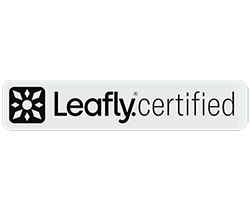It has been four years since Florida voters first passed a constitutional amendment to legalize medicinal cannabis. This amendment allowed for the production and sale of cannabis edibles infused with THC, but product development was delayed due to a lack of adequate regulations regarding testing and consumer safety.
On August 20th, 2020, the Florida Department of Health published regulations and rules for edible cannabis products. Since then, Medical Marijuana Treatment Centers(MMTC’s) have already begun offering a wide array of products.
What Are the Regulations for Cannabis Edibles in Florida?
Many aspects of Florida medicinal edibles are regulated for consumer safety. The following are some of the rules that MMTCs must follow when producing cannabis edible products to comply with Florida legislation:
- Color- The regulations prohibit any sort of bright colors that might make edibles appear candy-like. Colors must be minimized to prevent attracting children.
- Shape- The guidelines state that the following shapes are acceptable: squares, circles, rectangles, triangles, parallelograms, ovals, or diamonds.
- Appearance- Edibles may not look like any publicly recognizable candy brand. They also cannot have icing or sprinkles of any kind.
- Types of Edibles- The following types of cannabis edibles are allowed: baked goods, chocolates, gelatins, lozenges, drink powders.
- Contaminants- All edibles must be free of levels of contaminants that are deemed unfit for human consumption, including mycotoxins, heavy metals, pesticides, residual solvents, filth, and foreign materials.
- Potency- Laboratories must test edibles for concentrations of tetrahydrocannabinol(THC) and cannabinol(CBD). Individual servings may not exceed 10mg of THC each. Multi-serving edibles may not exceed a total of 200mg of THC.
- Homogeneity- Multi-serving edibles must have a homogenized dosage. For example, a chocolate bar with six pieces must have the same dosage of THC in every single piece.
If you would like to read more about the Florida standards for the production of medicinal marijuana edibles, you can find the full documentation online here.
How Does Testing THC-Infused Edibles Work?
Certified Marijuana Testing Laboratories in Florida are required to test all cannabis edible products for THC concentration, CBD concentration, and the presence of contaminants unfit for human consumption. The following are some of the advanced analytical chemical processes that we perform to test cannabis edibles:
Sample Preparation
ModernCanna uses a state-of-the-art technique to prepare samples for potency testing. Testing the potency of cannabis edibles is a difficult task that requires creative technological solutions. The instruments utilized to analyze potency are simply not designed to handle edible materials that can be sticky or messy. Brownies, gelatins, and other edibles are full of fats and sugars that could easily impair the way the instruments operate.
The best technique to solve this issue is to utilize a cryogenic grinder, also called a freezer mill, to pulverize the edibles mechanically after freezing them with liquid nitrogen. This process turns the edibles into a powder, which is much easier to handle in the laboratory.
Once the sample is pulverized, the individual components can be separated using a method called flash chromatography. Once this step is complete, then testing can begin. Watch the video below to get an idea of how the freezing and pulverization process works.
Cannabinoid Potency Testing
One of the reasons that patients prefer to consume cannabis edibles instead of smoking or vaping is that it allows them to get a more precise dosage. It is imperative for consumer safety that edibles are accurately labeled so that consumers can take the appropriate amount of cannabinoids to treat their medical conditions safely.
Under state law, Certified Marijuana Testing Laboratories must provide MMTC’s with reports that detail the concentrations of a variety of cannabinoids besides THC and CBD, including the following:
- d9-Tetrahydrocannabinol (Delta-9 THC)
- d8-Tetrahydrocannabinol (commonly called Delta-8 THC)
- Tetrahydrocannabivarin (THCV)
- Cannabidiolic acid (CBDA)
- Cannabigerol (CBG)
- Cannabinol (CBN)
To test the amount of cannabinoids in cannabis edible products, laboratories use high-pressure liquid chromatography (HPLC) and gas chromatography.
Homogeneity Testing
All edibles with multiple servings must be tested for the overall homogeneity of cannabinoids. This process ensures that the medically significant cannabinoids are evenly distributed throughout the product. Individual servings must also have an evenly distributed dosage because many patients prefer to break a serving in half to consume a lower dosage. Indeed, testing of individual servings is vital for new patients who have less tolerance to medicinal products.
Our laboratories ensure that we take enough samples to accurately measure the consistency of final products so that MMTC’s can be confident that their marketing and labeling is accurate, which is essential for building the trust and loyalty of their consumers.
Contaminant Testing
Under Florida law, marijuana edibles are held to the same rigorous standards as other forms of cannabis, such as herbal smoking products and oil. Laboratories must provide accurate and precise results that are verifiable, reproducible, and legally defensible to keep consumers safe and ensure the medicines’ quality.
Consumer safety is of utmost importance for non-cannabis edible products, and it is even more critical for medicinal cannabis products. Contaminant testing for cannabis edibles utilizes analytical chemistry laboratory processes to measure trace amounts of substances down to parts per million and parts per billion.
To test for living organisms such as fungi and bacteria, laboratories use a process called polymerase chain reaction to detect the presence of strands of DNA specific for each organism.
What Comes Next?
For consumers, having edible products available is an invaluable resource. Many consumers do not prefer smoking or vaping, so they want more options to treat their medical conditions. Additionally, consuming medicinal cannabis edibles is one of the most discrete methods that allows patients to take their prescribed medication with more privacy.
There is a clear need and demand by consumers for cannabis edible products. MMTCs are now able to meet that demand and offer new and enticing products to their consumers. We are likely to see a lot of creative and delicious edibles come onto the market.
Providing patients with medicinal marijuana edibles is an essential step in the overall legalization process, and it also is helping to change societal attitudes toward cannabis. As the range of medicinal products expands, more people will likely come to understand the healing properties of the plant. There is a potential now to reach more patients, such as the elderly, who can benefit from consuming medicine in a safe and easy manner.



 Modern Canna
Modern Canna